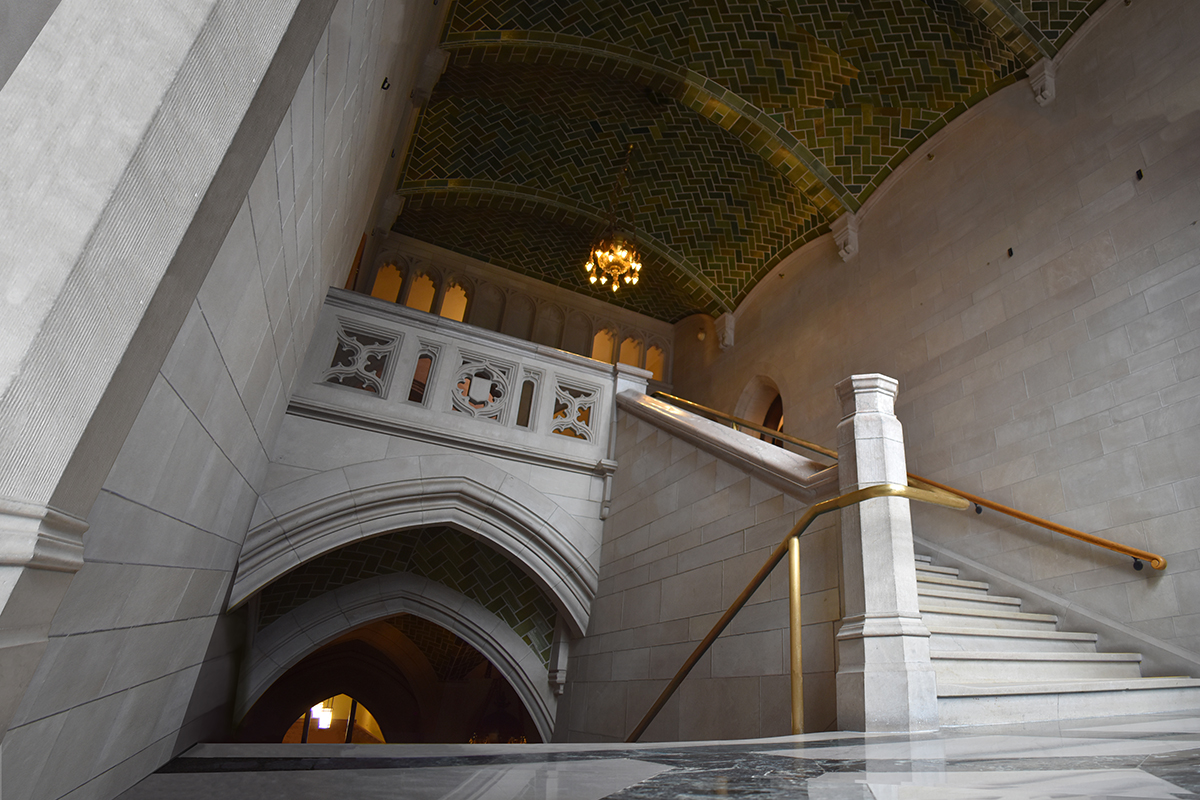Ruins and Ruination Speculative Exercises on Architectural Decay and Transformation







1-2 Linsly-Chittenden Hall: Decay and Ruin
Following matte-painting principles and techniques, I first reconstructed, and then ruined Linsly-Chittenden Hall. The left image is a “reconstructed” version of photograph, in which I removed people and signage, and extended the space of the photograph. The right image is a speculative ruination of the space, in which decay reveals layers of veneer and leaves tell-tale signs of abandonment.
3-4 Late Entry to the Yucca Mountain Universal Warning Sign Competition
At the 1981 Human InterferenceTask Force meeting, Emil Kowalski proposed that nuclear storage facilities be made so technically difficult to access that any civilization able to do so can be assumed to also have the technology to understand and detect radiation. This proposal to encase the Yucca Mountain nuclear storage facility in a concrete and titanium dome has six access points amongst hundreds of thousands of identical-looking circular panels. Future civilizations with X-ray technology, and therefore an understanding of radiation, will be able to locate access points. The mechanism for opening the access points also requires an understanding of Newtonian physics and high levels of water or air pressure. This proposal to properly seal off the nuclear waste and protect it from ground leaching, seismic disturbance, and humans, themselves, requires perhaps all of the concrete and titanium on the planet.
5-7 The Farnsworth House: Transformation and Ruin